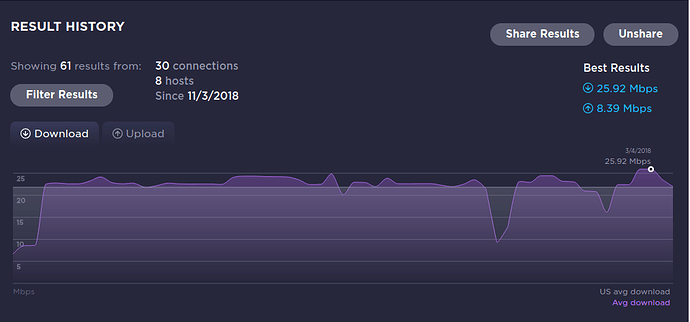A little update fyi.
I email-whinged to AB, including my sync, SNR & Attenuation data, in my email, along with Ookla data since 15/3, & the map showing my house to node proximity with copper length & estimated DL/UL speeds… with me bluntly expressing my dissatisfaction at the stark dichotomy with my 50/20 Plan’s actual performance. I also included some of the excellent info kindly provided to me in this thread.
Initial AB response largely ignored most of my material, objections & questions, & treated me rather simplistically, all of which angered me & i wrote back telling them so. Particularly egregious was this infuriating:
NBNCo only assures FTTN speeds above 12mbps down and 5mbps up so we would be unable to lodge a speed fault for services achieving more than this
In said reply email i called out their unhelpful hiding behind the “NBNCo defence”, equating it exactly to the same shite my previous ADSL vendor gave me about them being hamstrung by Telstra’s similar rhetoric.
AB’s next reply began treating me like i had more than two functional neurons, unlike the first, but reinforced this unpalatable brutal reality:
Unfortunately, NBN are the ones that deal with any line faults so we have to abide by their policies and procedures. This means that if the sync rate for the line is above 12/1mbps then NBN won’t take any action on any tickets that we raise. I understand that the line specs aren’t great, but our hands are tied at the moment. This isn’t meant to be a cop out response, and one of Aussie Broadband’s core values is “no bullsh*t”, so I’ll level with you, NBN are the brick wall in this specific circumstance
Given the reality of this shitty lieberal fraudband debacle, & my bitter acceptance of the fact that NBNCo have RSPs over the same barrel that Telstra had ADSL ISPs over for years, i’ve decided just to downgrade my Plan from 50/20 [given i don’t even get 50% of that] to 25/5, & AB have offered to credit me the difference between the two plans onto my account.
I know that i’ve not yet done anything about testing the cable quality within my house, but i just [rightly or wrongly] perceive that on balance of probability the bottleneck is more likely to be the multi-decades-old Telstra/NBNCo underground copper than my 17 y/o house wiring, so at this point i’m inclined to keep my pennies in my purse.
Btw, here’s my latest Ookla history since 15/3 fraudband:

 ]. I’ve read your respective latest(s), but my reply here now is just a “placeholder”… i wanted to say thanks with alacrity, but confess i’ll need to re-read, digest, think, give up, slap myself about to snap out of it, get back on the horse, conjure my best plan, & get on with it… me being me, this will not be a fast process, ha. Doubtless i’ll have more questions as time goes along & my conjecturing & conjuring proceeds, but for now i’m inclined to suspect the least-worst plan might possibly be not to even try troubleshooting my current wiring to locate the specific weak link/s, but instead just get the notional cabler to install a shortest-possible new run to Study from house entry point, disconnecting whatever’s current at those two places, then forgetting all about the then-legacy current wiring. Ie, don’t waste Cabler’s time = my money troubleshooting, but go direct to solution via replacement. Anyway, more thinking to do…
]. I’ve read your respective latest(s), but my reply here now is just a “placeholder”… i wanted to say thanks with alacrity, but confess i’ll need to re-read, digest, think, give up, slap myself about to snap out of it, get back on the horse, conjure my best plan, & get on with it… me being me, this will not be a fast process, ha. Doubtless i’ll have more questions as time goes along & my conjecturing & conjuring proceeds, but for now i’m inclined to suspect the least-worst plan might possibly be not to even try troubleshooting my current wiring to locate the specific weak link/s, but instead just get the notional cabler to install a shortest-possible new run to Study from house entry point, disconnecting whatever’s current at those two places, then forgetting all about the then-legacy current wiring. Ie, don’t waste Cabler’s time = my money troubleshooting, but go direct to solution via replacement. Anyway, more thinking to do…